Designers go to great lengths to give airplanes good flying qualities. A large part of this is achieved by tailoring the aerodynamic characteristics of the airframe and control surfaces. While the basic flying qualities of the airframe are important, the interaction between the airplane and the people who fly it also requires significant attention.
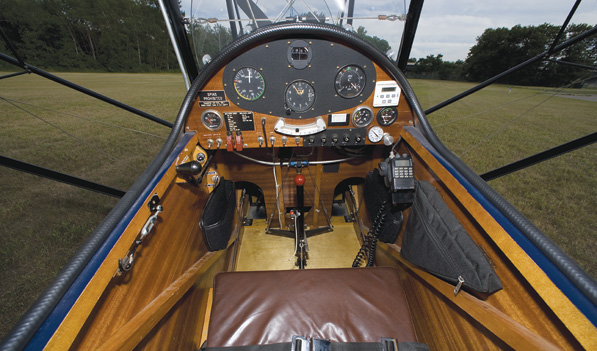
The controls in the cockpit are the interface between the pilot and the airplane. The design and function of the flight controls have a major impact on flight safety. In a properly designed cockpit, the controls let the pilot fly the airplane and operate its systems simply and without confusion.
In a poorly designed cockpit, the controls can cause incidents or accidents for a variety of reasons. Sometimes they produce an unexpected result when the pilot operates them. Sometimes they confuse the pilot. Controls can provoke errors or, in a few cases, create unexpected pitfalls due to poor mechanical design. A particularly problematic area is the use of unconventional controls.
When a pilot flies an airplane, there are many sources of feedback between the pilot and the controls. These include control position, control pressures and angular control position. These cues help tell the pilot what the airplane is doing, and what control inputs are being made. This information is then used to determine the pilots next control inputs. The interaction between the pilot and the controls is not as simple as it might initially seem. It is often difficult to tell in advance which control cues are the most significant, and their relative importance varies depending on the flight condition.
Periodically, someone builds an airplane with an unconventional layout of the primary flight controls. The two most common reasons for this are mechanical simplicity, and/or the belief that the new controls are somehow better than the conventional stick/yoke and rudder pedals. Unconventional flight controls seem to show up more often on unconventional airplanes, and they are often more at fault for the failure of the machine than the radical aerodynamic configuration. You have to pity a poor pilot who is faced with an entirely new airframe, combined with flight controls that don’t look like or work like the conventional stick and rudder pedals.
Cues and Control Inputs
Even when the airframe is conventional and well-behaved, using unusual flight-control layouts or kinematics can be tricky. Some new approaches will succeed, but often they cause problems and may even cause accidents. The primary reason for this is that pilots have all learned to fly in airplanes with conventional controls. They have programmed themselves to react in a certain way to each set of control position, angle and pressure cues they receive. Many of these reactions are subconscious.
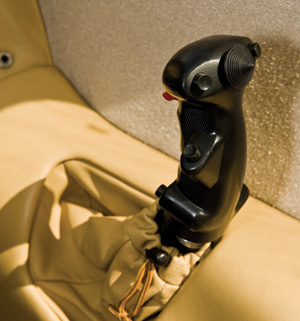
If the new control system provides different cues, then much of the pilots skill is rendered irrelevant. The pilot is essentially placed in a position of having to learn to fly all over again. This means the each control input requires conscious thought rather than being subconscious, as is normally the case. The critical difference here is that a pilot flying normally thinks turn and automatically makes the proper control inputs to initiate and coordinate a turn. A new student pilot, or a pilot faced with a new set of controls, has to consciously think of each control motion such as stick over, press rudder, stick back, neutralize ailerons, etc.
All of that conscious thought takes time, which is why a new student is always behind the airplane. Experienced pilots faced with a non-standard set of controls have this same problem, compounded by the fact that they already have a set of learned automatic responses to unlearn. This last item is a potential source of real trouble. As long as the air is calm and everything happens slowly, it is possible to consciously think of each control input and correct if it starts out wrong. When the pilot workload gets high, as is the case in turbulence or when flying low to the ground, there is a strong tendency to short-circuit conscious thought and revert to the learned automatic responses from ones original pilot training. This is where the problems can start.
If the cues the pilot gets from a non-standard set of controls are significantly different from those of a conventional system, the pilot can quickly lose control in a high-workload situation. The sequence goes thus: Turbulence or a control input upsets the airplane. The pilot makes an instinctive control input that is based on conventional controls. When the airplane does not respond as expected, the pilot makes a second, larger control input, which only exacerbates the problem because it is also wrong. The situation rapidly gets out of hand because the pilots inputs to the controls do not produce the expected effect, and the airplane feels out of control. The pilot feels as if he is losing control and wants to correct it quickly, so he continues to react instinctively rather than consciously thinking about control inputs. The pilot and airplane rapidly get out of phase, and the whole situation diverges quickly.
The problems encountered by airplanes and helicopters that use top-hinged control sticks are a good example of this type of situation. Top-hinging the stick is usually done in the interest of mechanical simplicity. On a helicopter, gyroplane or high-wing airplane, it is much easier mechanically to hang the stick down from above than to run linkages up and around the pilot from a conventional floor-hinged stick. Unfortunately, these systems have caused several accidents because they give the pilot mixed cues that lead to confusion and loss of control.
Typically, top-mounted sticks are set up so that the direction of travel and the control pressures operate in the same sense as a conventional stick. The pilot pushes forward for down, aft for up, etc. Whats different from a conventional stick is the angular rotation of the handgrip and the torque on the pilots wrist. On a conventional bottom-hinged stick, pushing forward rotates the pilots hand so that the front of the hand moves down and the back of the hand moves up. The converse is true for a pull. The change in attitude of the hand relative to the pilots body is the same as the change in the airplane attitude the pilot is trying to command with the control input. If you visualize an imaginary airplane rigidly attached to the stick, moving the stick changes the attitude of the model the right way.
On a top-hinged stick, however, the angular cues are backward, while the stick-force cues operate in the normal direction. Pushing the stick forward rotates the hand (and the imaginary airplane on the end of the stick) nose up, while commanding the real airplane nose down. This conflict between angular cues and stick-pressure cues can cause the pilot to become confused as to which way to move the stick to command the needed attitude change, especially when the workload gets high as in turbulence or a crosswind landing. Any input to the stick provides a pressure cue that says zig and an angular cue that says zag. In the absence of time to sort it out, the pilot may lose the connection between stick motion and airplane response, or get it backwards. The confusion leads to pilot-induced oscillations and loss of control. This is not a theoretical possibility; it has happened more than once, on more than one type of aircraft.
The subtlety of the interaction between angle, position and pressure cues is illustrated by the fact that pilots manage just fine with no stick-angle cues in pitch. On most airplanes with yokes, the pitch attitude of the yoke remains essentially constant as it moves fore and aft, yet this does not seem to cause any problem for pilots, even those trained on airplanes with conventional sticks. It is only when the cue is reversed that confusion arises.
It is interesting to note that hang-glider and trike pilots, who move their control bars in the opposite sense to conventional airplane sticks, do not have difficulties similar to those encountered by pilots accustomed to flying in airplanes with top-hinged sticks. Hang-glider pilots are trained to move the control bar so that its attitude change mimics the attitude change they want to command for the glider. Even though this means that the control forces are reversed relative to conventional airplane practice, the control motions are logical and, once learned, instinctive. Pilots who are qualified on both trikes and conventional airplanes must be careful to pay attention to which type of machine they are flying.
An Incomplete Understanding
The importance of stick-position and stick-angle cues was not well understood until relatively recently. For a long time it was believed that pilots used stick-force feedback exclusively. They felt which way they were pulling or pushing on the stick, and this gave them the control cues they needed. The top-hinged stick problem was an early clue that this was not entirely true.
The early F-16s gave another indication that force feedback was only part of the story. The F-16 was the first production airplane to have a full-authority fly-by-wire flight-control system. For the first time, the stick sent information to the flight-control computers, and the computers controlled the control surfaces without any direct connection between the stick and the control surfaces. This made it possible to create a pure force-input flight-control system. The side stick on the F-16 was set up so it did not move, or moved little. It was mounted on sensors that measured the force the pilot put on the stick and sent this information to the flight-control computer. While pilots were able to fly the airplane using this system, they did not like it and complained about the lack of stick-position and stick-angle feedback from the airplane. The control system was revised, and the stick was mounted to a spring system that allows it to move in the conventional manner, albeit with relatively small throws. This revised system is much preferred by pilots.
The important lesson for kit aircraft designers is to keep the control motions conventional. No matter what the control surfaces are doing to provide the proper aerodynamic moments, pilots should be able to operate the flight controls like they would in a conventional airplane and get the expected response.

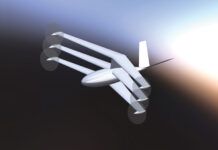
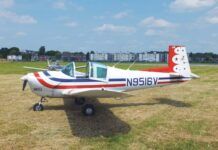
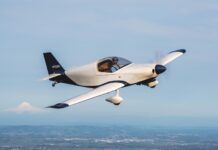




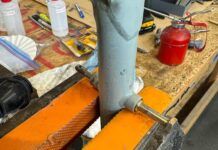

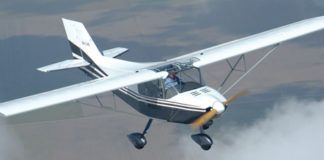
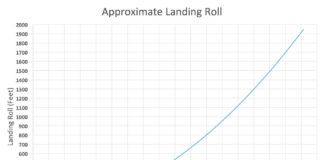
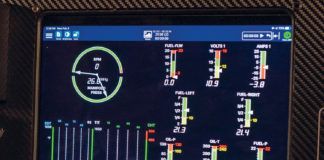
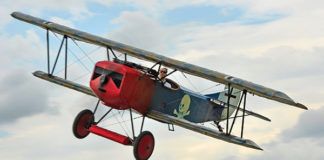
I flew a top hinged UL that used a twist throttle that worked backward from a motorcycle. My hang glider and motorcycle experience added to the high thrust level of the craft kind of assured my less than graceful arrival.